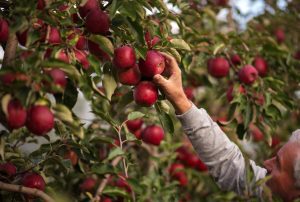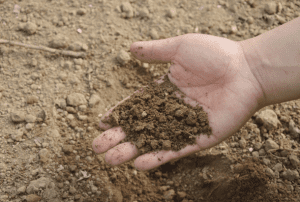Pear-spectives from South Africa and Australia
Industry Best PracticeLast week, APAL’s Future Orchards Pear Masterclass travelled to South Africa via the Goulburn Valley and South Australia to hear from technical advisors, agronomists and growers about setting and achieving crop goals around quality, yield, consumer and market expectations.
What was common amongst all, is that they strive to grow good quality fruit.
South Africa – quality that meets market preferences
At Eselfontein and Vadersgawe Orchards in South Africa, Peter Allderman from Top Fruit, along with a team of pear growers, technical advisors and agronomists, shared industry know-how and orchard practices they use to set and achieve their crop goals around quality and yield.
Approximately 13,000 ha are planted with pears in South Africa and around half of the 438,000 tonnes of pears produced are exported.
In the orchard discussions, they highlighted the importance of growing the tree before focussing on higher yields, the role of light in achieving fruit quality and colour goals, opportunities and challenges with rootstocks, thinning and pruning, environmental factors, tree structure and more.
Graeme Krige from Fruit Max Agri says the focus is on producing as many Class 1 pears as possible, and because of the export focus, the quality standards don’t really change.
“Everything starts with quality and what the market wants,” Heinrich Kempe said.
This includes colour and fruit size, and requirements can vary depending on the market. For example, Forelle (Corella) is a blush pear, and colour is very important. The market wants a fruit size count of 70 or 80mm and this is what the grower aims to achieve.
Vernon Bassett, farm manager agrees that while tree shape and size play a role, fruit size and colour are the main goals.
“It’s a balance between size profit and colour,” Vernon said.
The orchard he manages has achieved a 65 t/ha with 90 per cent Class 1 packout on their Forelle block.
Because size and colour are the main fruit quality goals, sunlight is also important. Not dissimilar to Australian orchards, filling the tree space adequately to intercept light is essential.
Managing vigour and growing great quality pears in the Goulburn Valley
In the Goulburn Valley at Calimna Orchard, Matthew Lenne (Calimna Orchard/Lenne’s Orchard) and Nic Finger (Fruit Help) discussed growing great quality pears on older trees, as well as the newer varieties Piqa® Boo® and Ricó® on younger trees.
Key are setting up the tree structure to optimise light interception and manage vigour across the tree.
Some of the pear trees at Calimna Orchard may be 50 years old but they still produce good quality pears. A three-year pruning cycle is used to make sure the wood in the tree is less than four years old. “Pruning the pear to the tree,” as Matthew said.
A combination of approaches is used manage vigour in Ricó® and Piqa® Boo® trees. Each Ricó® tree has six stems.
Bending the stems using a V-style trellis, mechanical heading and targeted deficit irrigation help to slow down the trees.
Ricó® is a blush pear so light management is important for colour development.
The Piqa® Boo® trees are divided into four stems to help manage light interception as well as vigour. Vigour is managed using techniques similar to those used for Ricó®.
Maximising quality: The goal for Corella pears in South Australia
In South Australia, pruning has recently finished in Rohan Gilmour’s orchard and the bees are busy pollinating flowers. Because of the wet spring, a lot of effort has gone into managing fungal diseases. By mid-November, thinning will commence to manage crop load and fruit size, important factors for pear quality.
Rohan said his orchard netting contributes to better quality fruit.
“Sunburn and bird damage is down, yields are still very, very good. The quality because of those factors is quite amazing.”
Labour remains a challenge, but while the orchard has relied on backpackers in the past, they are also fortunate to have regular local staff who return each year.
For Rohan, it’s important to have pickers who will take their time when picking, to ensure fruit size and quality remain high.
Many thanks to Peter Allderman, Willie Kotze, Graeme Krige, De Kock (Hammies) Hamman, Heinrich Kemp, Christo Stydom, Veron Basset, Ian Versveld, Nic Finger, Susie Green, Matthew Lenne and Rohan Gilmour for sharing their orchards and to Marcel Veens and Michael Crisera for taking part in the panel.




